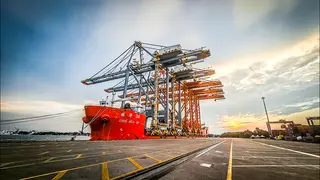A team of over 30 people from the management of Tata Group, Singapore International Airlines (SIA), Vistara and Air India, held meetings spread over six months, drawing integrated business plans and discussing valuations — this led to getting SIA on board for the merger of Vistara and Air India.
The Tata Group and SIA, on Tuesday, announced the consolidation of Vistara with Air India by March 2024. As part of the merger transaction, Singapore Airlines (SIA), which currently holds 49 per cent in Vistara, will invest per cent 2,059 crore to get 25.1 per cent in the merged Air India.
Related Stories
Tata Group to merge Vistara with Air India
Singapore Airlines will invest ₹2,059 crore in Air India and hold 25.1% shareholding in the merged entityTata Sons and Singapore Airlines entered into a joint venture and commenced operations on January 9, 2015, of Vistara with a 51:49 pre cent stake.
The announcement on Tuesday didn’t come as a surprise to aviation industry watchers and, as it turns out, sources close to the merger process told businessline that SIA was informed by the Tata Group about its possible exit in Vistara when the latter had acquired Air India. “SIA was always kept in the loop about a possible route that could be explored once Air India was acquired,” said the source.
It was only in the third round that the government had luck with the Tata Group acquiring Air India. The airline had a whopping debt of over ₹60,000 crore accumulated for decades together. The company had submitted a winning bid of ₹18,000 crore as the Enterprise Value of Air India.
In this case, too, the relative valuation of Air India was one of the top objectives discussed, according to people in the know. BoFA was appointed as an advisor to Tata Sons to negotiate and find a relative value in the merger.
“Albeit the discussions on valuations started only after a few months of its acquisition, it was one of the major objectives and challenges. SIA wanted a stake of more than 25 per cent in Air India in return of giving up its stake in Vistara because that is a threshold in the Company’s Act. To meet this criterion, SIA needed to make a primary infusion. The valuation of that stake needed to be negotiated. ”
The person explained that relative valuation is done on historical financials. The case of the Air India and Vistara merger, was peculiar because both Air India and Vistara had a huge debt. Air India had gone through a transition, and the Tata Group had just taken it over and was cleaning up the books. To top that, the past two fiscals were wiped out because of covid-19 making it challenging to pin a valuation.
“The Tata Group had done its due diligence on Air India when it acquired the company, it also knew the financial health of Vistara. On the other hand, it was SIA that needed to get a clear picture,” it was this due diligence that took almost six months to conclude the deal. The ultimate goal was to have a “win-win deal” for both the companies involved, the person explained.
Both the Tata Group and SIA have other airlines under their umbrella. While SIA has Scoot, the Tata Group had acquired Air India and Air India Express earlier this year. Along with this, it also recently completely acquired Air Asia India.
The other objective was to discuss alliances and synergies between all the airlines involved. “The management of Vistara, Air India, and SIA were all involved in this aspect of discussions. Integrated business plans. There had to be a lot of thinking on what can be achieved, what cannot be achieved etc. Ironing out those things too took a lot of time.”
One thing, the person explained, was clear that Air India would continue to operate as an independent entity despite SIA’s stake. SIA operates routes between India and Singapore along with several other routes between India and other countries.
Related Stories
Jet Airways’ staff body files plea for liquidation
Earlier this month, All India Jet Airways Officers and Staff Association sent a legal notice to the airline’s resolution professional, JKC and lendersCurrently, the main overlapping with Air India and SIA is its routes to Singapore. However, the person explained that in future, if Air India wanted to fly to Australia, because it made business sense, it would. One of the routes that Singapore Airlines operates from India is to cities in Australia.
Speaking about the way forward, the person said, primary approvals from the antitrust body, the ministry of civil aviation and the DGCA is required. “The other task is to also find appropriate roles for appropriate people currently holding key positions in the said companies,” the person explained.









Comments
Comments have to be in English, and in full sentences. They cannot be abusive or personal. Please abide by our community guidelines for posting your comments.
We have migrated to a new commenting platform. If you are already a registered user of TheHindu Businessline and logged in, you may continue to engage with our articles. If you do not have an account please register and login to post comments. Users can access their older comments by logging into their accounts on Vuukle.